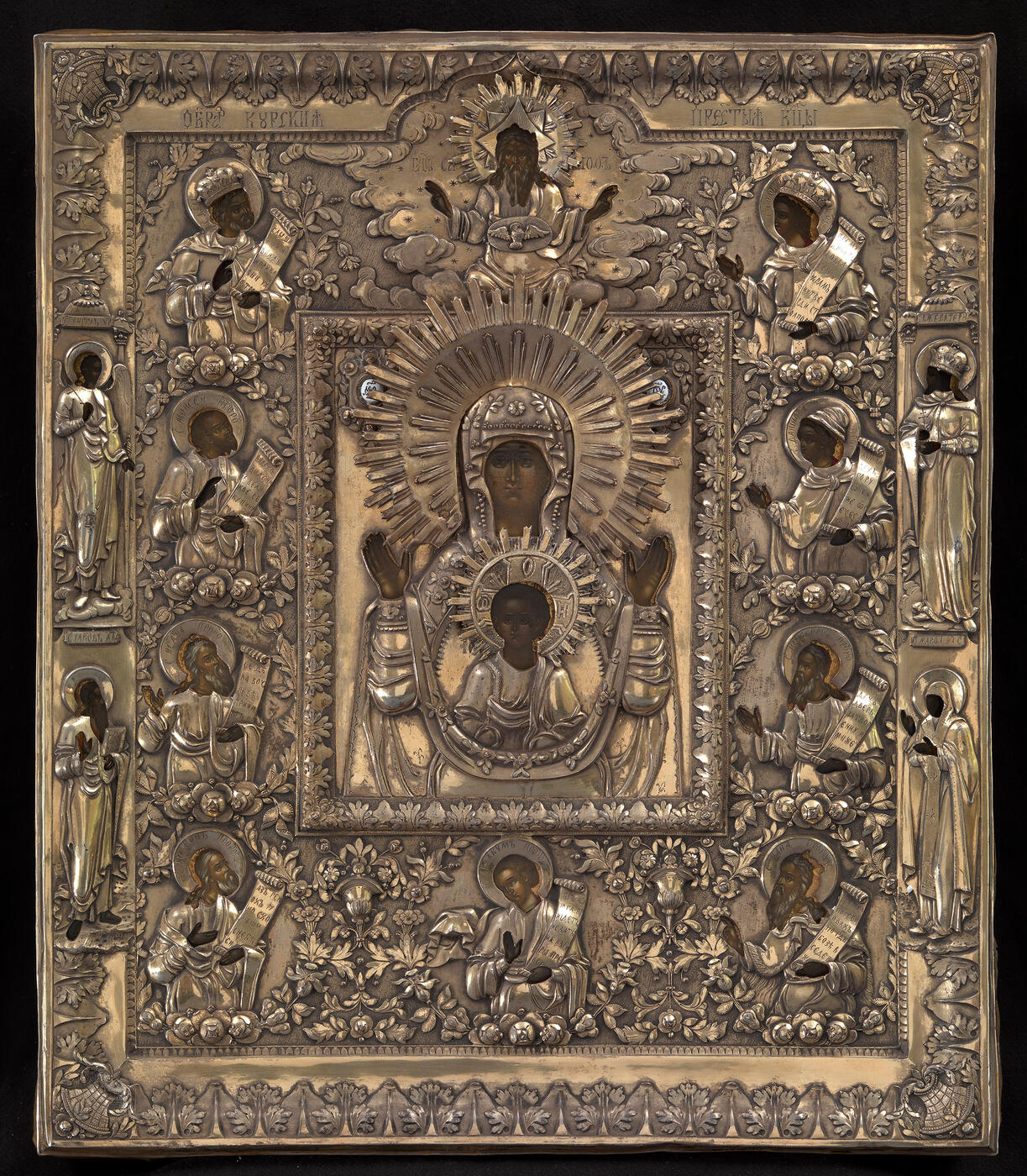5 June 2013 Russian Art Auctions
5 June 2013

* 619. THE KURSKAYA KORENNAYA MOTHER OF GOD AND SELECTED SAINTS WITH A SILVER-GILT OKLAD
POVOLZHYE, OLD BELIEVERS' WORKSHOP, DATED 1819, OKLAD STAMPED WITH MAKER'S MARK I.CH IN CYRILLIC, MOSCOW, 1828, 84 STANDARD.
43.5 by 37 cm.
30,000–40,000 GBP
The original Kursk icon of the Theotokos “of the Sign” (the Kurskaya Korennaya Mother of God) is among the Wonder-Working images of the Mother of God that are particularly revered. All known copies reproduce the additions made to the icon in 1597 when Tsar Feodor Ivanovich decreed that this holy relic of Kursk should be framed with depictions of the Lord Sabaoth, the Prophets David, Moses, Isaiah and Gideon (left); Solomon, Daniel, Ezekiel and Elijah (right) and Habbakuk (below), all holding scrolls of their prophesies concerning the Mother of God. Supplementing the icon with images of the Prophets symbolised the link between the Old and New Testaments and gave a deep theological meaning to the central image. The renewed image was distinguished not only by the thought given to its execution, but also by its integrity of composition: the Prophets faces are turned towards the Theotokos and framed within a stylised vine, a symbol of Christian faith, based on Christ’s parable: “I am the true vine” (John 15: 1). A special feature of this icon is the transformation of the vine into lavish garlands of flowers.
The original Kursk Theotokos “of the Sign” is a token of protection for Russian warriors, particularly the Cossacks, and since the 1920s it has been a major sacred object for Russian Orthodox living far from Russia. Thus, it became a symbol of unity for the Russian Church Abroad.
The piece offered here is a cherished family icon, written by a highly-skilled Old Believer icon painter, possibly from the Pavlovona-Oke region, the lower right border has the inscription: “Painted 1819”. The borders have depictions of a Guardian Angel and the family name saints of the commissioner. The oklad was made in Moscow in 1828 in the classicizing style of the day.
Both the icon and its oklad may be regarded as fine examples of several phenomena in the arts of the early 19th century: the preservation of Old Russian icon painting by Old Believer masters, the influence of a popular art aesthetic on their work and the creative opportunities that classicism afforded the masters of decorative applied art.

Notes on symbols:
* Indicates 5% Import Duty Charge applies.
Ω Indicates 20% Import Duty Charge applies.
§ Indicates Artist's Resale Right applies.
† Indicates Standard VAT scheme applies, and the rate of 20% VAT will be charged on both hammer price and premium.